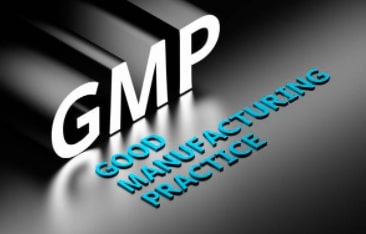Understanding Your Target Market: Key Insights for Successful Product Sales
Understanding your target market is essential for driving successful product sales. By gaining insights into your customers’ needs, preferences, and behaviors, you can tailor your sales strategies and offerings to meet their expectations effectively. Here are key considerations to help you understand your target market and boost your product sales:
Conduct Market Research
Conduct thorough market research to gather data and insights about your target market. Identify demographic information such as age, gender, location, and income level. Explore psychographic factors like interests, values, and lifestyle choices. This information will help you understand the motivations and preferences of your customers, allowing you to align your product offerings and marketing messages accordingly.
Analyze Customer Feedback
Pay close attention to customer feedback, whether it’s through direct communication, surveys, or online reviews. Analyzing customer feedback can provide valuable insights into their satisfaction levels, pain points, and areas for improvement. Use this information to refine your products, address customer concerns, and enhance the overall customer experience.
Segment Your Market
Segmenting your target market allows you to categorize customers based on shared characteristics or behaviors. By dividing your market into distinct segments, you can develop targeted marketing campaigns that speak directly to each segment’s needs and preferences. Consider factors such as age, industry, buying behavior, or specific challenges. This segmentation approach enables you to deliver personalized messages that resonate with your customers, increasing the effectiveness of your sales efforts.
- Monitor Competitors: Keep a close eye on your competitors to understand their strategies, product offerings, and customer base. Analyze their strengths and weaknesses, identify gaps in the market, and look for opportunities to differentiate your product. By staying informed about your competition, you can position your product in a unique and compelling way that appeals to your target market.
- Stay Up-to-Date with Industry Trends: Stay informed about the latest industry trends and changes that may impact your target market. Monitor shifts in consumer behavior, emerging technologies, or regulatory updates. Being aware of industry trends helps you anticipate customer needs and adapt your sales strategies accordingly. It also positions you as a knowledgeable and reliable resource for your customers, fostering trust and credibility.
Essentially, understanding your target market is a crucial aspect of successful product sales. By conducting market research, analyzing customer feedback, segmenting your market, monitoring competitors, and staying up-to-date with industry trends, you can gain valuable insights that inform your sales strategies and help you effectively meet the needs of your customers. By aligning your offerings with customer expectations and tailoring your marketing messages, you increase the chances of driving successful product sales and building long-term customer relationships.
Effective Communication: Connecting with Customers to Drive Sales
Effective communication plays a pivotal role in connecting with customers and driving product sales. It enables you to convey the value of your offerings, build relationships, and influence purchasing decisions. Here are key strategies to enhance your communication skills and connect with customers for successful sales outcomes:
Active Listening
Practice active listening when engaging with customers. Give them your full attention, demonstrate genuine interest, and let them express their needs and concerns. By actively listening, you gain valuable insights into their requirements, allowing you to tailor your product recommendations and address their specific pain points effectively.
Clear and Concise Messaging
Develop clear and concise messaging that communicates the value and benefits of your product. Avoid using jargon or technical terms that may confuse or alienate customers. Focus on expressing the unique selling points of your product in a simple and compelling manner. Keep your communication concise, highlighting the most relevant information to capture customers’ attention and maintain their engagement.
GMP Certification
Highlighting GMP certification in your communication can significantly boost customer confidence and trust in your product. Explain to customers that GMP certification ensures the quality, safety, and reliability of your product, backed by adherence to industry-recognized manufacturing standards. Emphasize how GMP certification demonstrates your commitment to delivering products of the highest quality, giving customers peace of mind and encouraging them to choose your product over competitors.
Tailor Communication to Customer Needs
Adapt your communication style and approach to align with each customer’s unique needs and preferences. Some customers may prefer a more formal and structured approach, while others may respond better to a friendly and conversational tone. Pay attention to non-verbal cues and adjust your communication accordingly. Building rapport through personalized and tailored communication enhances the customer’s overall experience and increases the likelihood of a successful sale.
- Effective Questioning and Persuasive Language: Ask probing questions to uncover customer pain points and motivations. Use persuasive language that highlights the benefits and solutions your product offers. Frame your communication in a way that addresses customers’ needs and positions your product as the ideal solution. Incorporate storytelling techniques and customer success stories to demonstrate the positive impact of your product in real-life scenarios.
- Follow-up and Relationship Building: Effective communication doesn’t end with the initial interaction. Follow up with customers to express gratitude, answer any additional questions, and provide further assistance. Building long-term relationships is key to driving repeat sales and fostering customer loyalty. Maintain regular communication through newsletters, personalized emails, or social media engagement to stay connected with customers and nurture ongoing relationships.
All in all, effective communication is essential for connecting with customers and driving product sales. By practicing active listening, using clear and concise messaging, highlighting the value of GMP certification, tailoring communication to customer needs, using persuasive language, and prioritizing relationship building, you can enhance your communication skills and build meaningful connections with customers. Effective communication builds trust, addresses customer needs, and positions your product as the solution they are seeking. By consistently improving your communication strategies, you can drive successful sales outcomes and cultivate long-term customer loyalty.
GMP Certification: Enhancing Product Sales through Quality Assurance
GMP certification demonstrates a commitment to stringent quality assurance processes throughout the manufacturing journey. Here are key ways in which GMP certification enhances product sales:
Assurance of Quality
GMP certification provides customers with assurance that the product they are purchasing meets the highest quality standards. It signifies that the manufacturing processes follow strict guidelines and undergo regular inspections to ensure consistent quality, safety, and efficacy. When customers see the GMP certification logo, they feel more confident in the reliability and performance of the product.
Compliance with Regulatory Standards
GMP certification ensures compliance with regulatory standards set by government bodies and industry organizations. Regulatory compliance is vital for product sales, as customers seek products that meet safety and quality requirements. GMP certification demonstrates that your product has undergone thorough scrutiny and meets all necessary regulatory standards, positioning it favorably in the market.
Competitive Advantage
GMP certification sets your product apart from competitors who may not have such certification. It differentiates your brand by highlighting your commitment to adhering to the highest manufacturing standards. In a crowded marketplace, GMP certification acts as a compelling selling point that distinguishes your product and increases its appeal to customers. It positions your brand as a trusted and reliable choice.
Building Trust and Credibility
GMP certification builds trust and credibility with customers. It signifies that your company has undergone rigorous assessments and quality control measures to earn the certification. Customers are more likely to trust and choose products that have been independently verified to meet industry-recognized standards. GMP certification establishes your reputation as a reliable provider of high-quality products.
- Market Expansion Opportunities: GMP certification opens doors to new market opportunities. Many businesses and institutions require suppliers to have GMP certification as a prerequisite for collaboration or procurement. Having the certification expands your potential customer base, allowing you to reach industries and sectors that prioritize products with GMP certification. It positions your brand as a preferred choice for businesses seeking quality-assured products.
- Consumer Confidence and Repeat Purchases: GMP certification fosters consumer confidence, which contributes to repeat purchases. When customers have a positive experience with a GMP-certified product, they are more likely to become loyal customers who continue to choose your brand. GMP certification reinforces the perception of quality and reliability, leading to higher customer satisfaction and increased customer retention.
Overall, GMP certification enhances product sales by assuring customers of quality, ensuring compliance with regulatory standards, providing a competitive advantage, building trust and credibility, opening up new market opportunities, and fostering consumer confidence and repeat purchases. By prominently highlighting GMP certification in your product marketing, you can differentiate your brand, attract customers seeking reliable products, and drive sales growth. GMP certification serves as a powerful tool to elevate your product’s value proposition and instill trust in customers, ultimately contributing to the success of your sales efforts.
Optimizing Sales Channels: Strategies for Reaching a Wider Audience
Optimizing sales channels is crucial for reaching a wider audience and maximizing product sales. By strategically selecting and utilizing the right sales channels, you can expand your reach, engage with potential customers, and increase your chances of driving sales. Here are key strategies to optimize your sales channels for maximum effectiveness:
Know Your Target Audience
Before choosing sales channels, it’s important to have a deep understanding of your target audience. Identify their preferences, behavior patterns, and preferred communication channels. This knowledge will help you select the most relevant sales channels to reach and engage with your target audience effectively.
Multi-Channel Approach
Embrace a multi-channel approach by diversifying your sales channels. Rather than relying solely on one channel, explore a combination of online and offline channels that align with your target audience’s preferences. This could include e-commerce platforms, brick-and-mortar stores, social media platforms, marketplaces, and direct sales. A multi-channel approach enables you to connect with customers through their preferred touchpoints, increasing your chances of capturing their attention and driving sales.
Online Presence and E-commerce
Establish a strong online presence to tap into the growing e-commerce market. Develop a user-friendly website that showcases your products, provides detailed information, and facilitates easy purchasing. Leverage e-commerce platforms and marketplaces that have a wide customer base and offer seamless buying experiences. Optimize your online presence for search engines to increase visibility and attract organic traffic.
Social Media Engagement
Leverage social media platforms to engage with potential customers and drive sales. Identify the platforms most popular among your target audience and develop a robust social media strategy. Create compelling content, engage with followers, and leverage social media advertising to increase brand visibility and generate leads. Utilize social commerce features to facilitate direct purchasing on platforms where available.
- Partnerships and Distribution Networks: Explore partnerships and collaborations to expand your sales channels. Identify complementary businesses or distributors who can help you reach new markets or customer segments. Forge strategic alliances that allow you to leverage their existing networks and tap into their customer base. By leveraging partnerships, you can amplify your sales efforts and access new opportunities for growth.
- Continuous Monitoring and Optimization: Regularly monitor the performance of your sales channels and make data-driven optimizations. Track key metrics such as conversion rates, customer acquisition costs, and customer satisfaction. Identify areas of improvement and adjust your strategies accordingly. Experiment with new channels and tactics, and allocate resources to the channels that yield the best results. Continuously adapt and optimize your sales channels to stay ahead in a dynamic marketplace.
In conclusion, optimizing sales channels is crucial for reaching a wider audience and driving product sales. By understanding your target audience, embracing a multi-channel approach, establishing a strong online presence, engaging with social media platforms, exploring partnerships, and continuously monitoring and optimizing your strategies, you can maximize your sales efforts and achieve business growth. Remember to adapt your approach based on customer preferences and market trends, staying agile and responsive to effectively reach and engage with your target audience across various sales channels.





